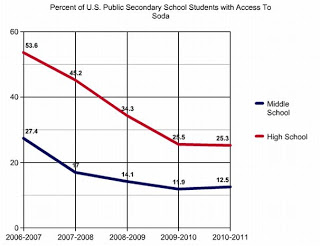Sodas losing fizz in schools, but exclusive deals remain

Though schools are getting rid of soda in high
numbers across the country, a lot of them still have relationships with Coke or
Pepsi, something reporters can find out by simply asking administrators.
 |
| Photo by Paul Robert Lloyd, via Flickr |
A 2005 survey found nearly half of elementary schools and
about 80 percent of public high schools nationwide had pouring rights contracts with one
or the other of the soda companies, which gives them exclusive rights to supply
all the beverages in school snack bars, vending machines, school stores and at sports
events.
The upside for the schools can include funding for field trips, gym uniforms, SMART boards and other perks, reports blogger Tom Philpott for Mother Jones. Philpott cites one study that shows students living in states with laws that limit junk food sales gained less weight — an average of about 2.25 pounds for a 5-foot child — than those that didn’t. A study in California showed students consumed 158 less calories each day in schools where sodas were banned and new nutritional regulations were implemented in cafeterias.
But one study of 20,000 students found no correlation between obesity rates and access to soda at school. “The research is pretty mixed,” Terry-McElrath said.
